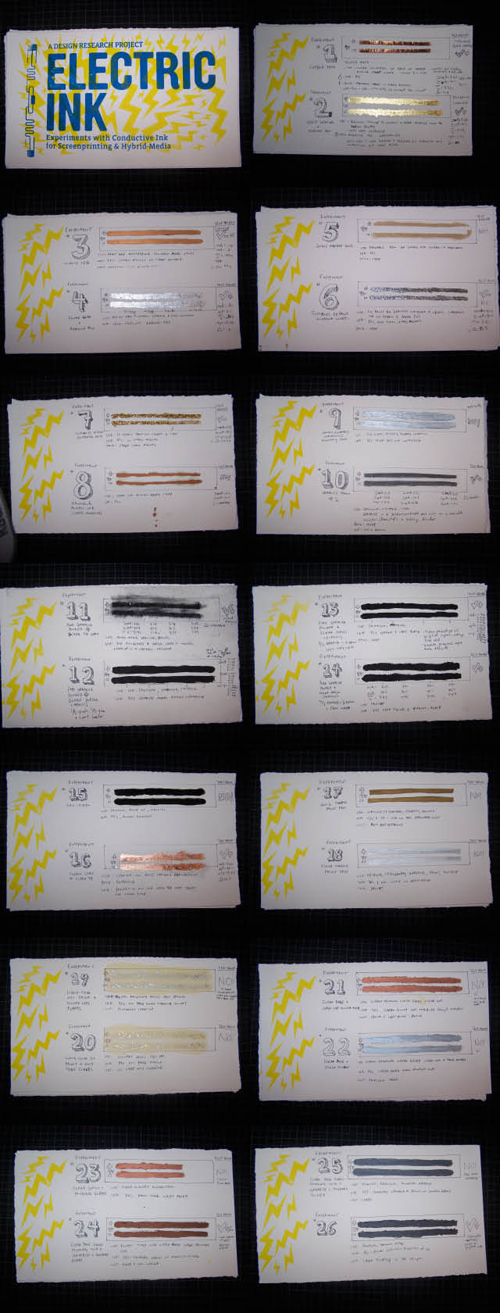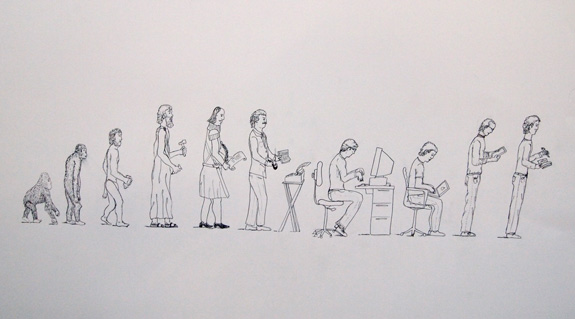
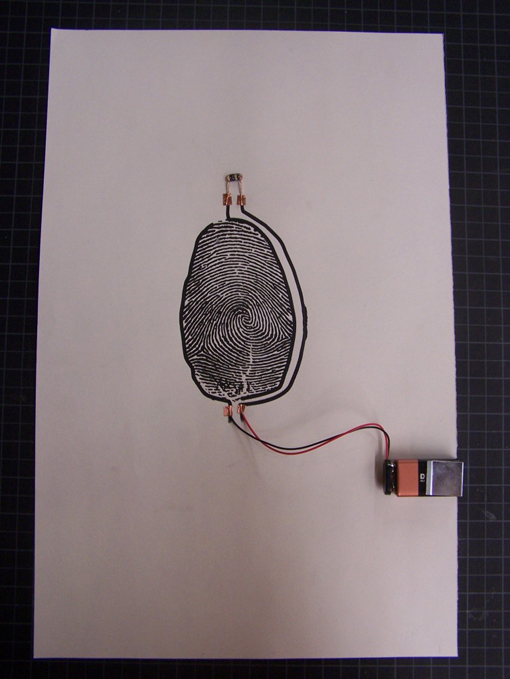
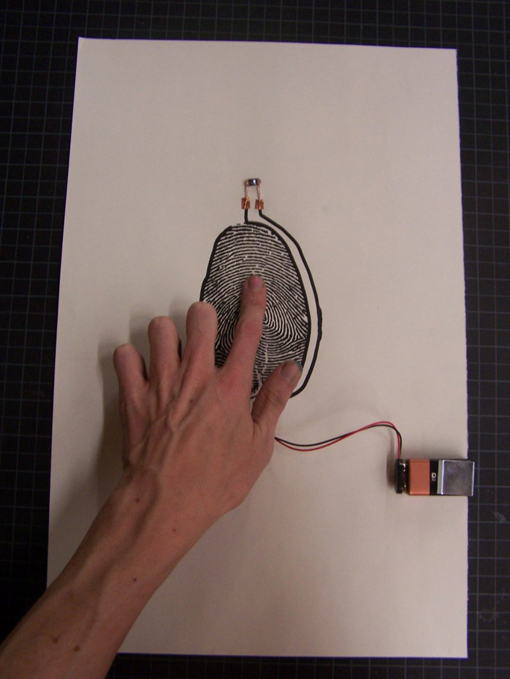
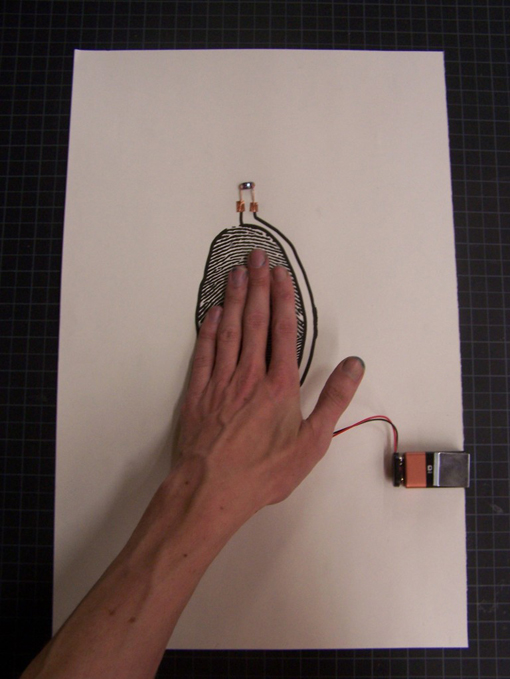
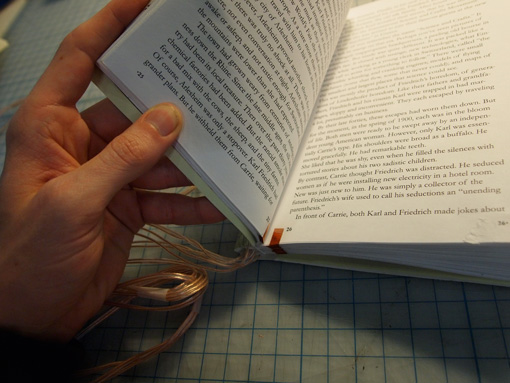
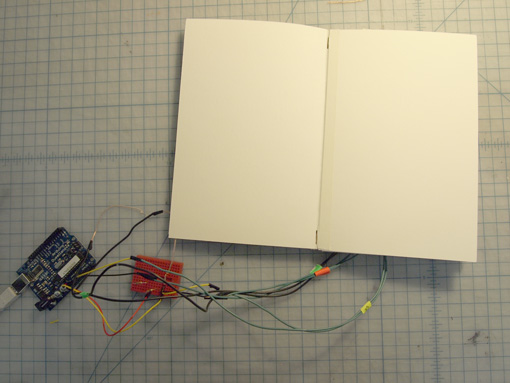
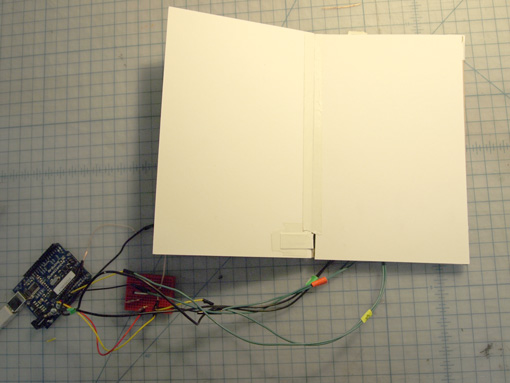
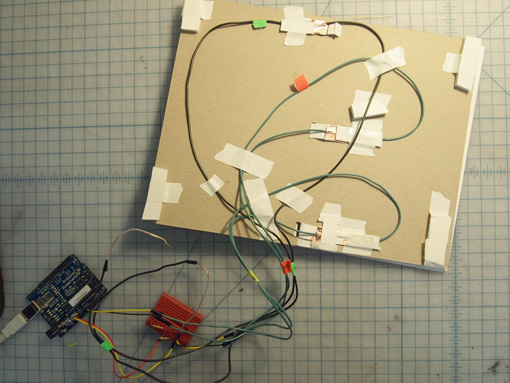
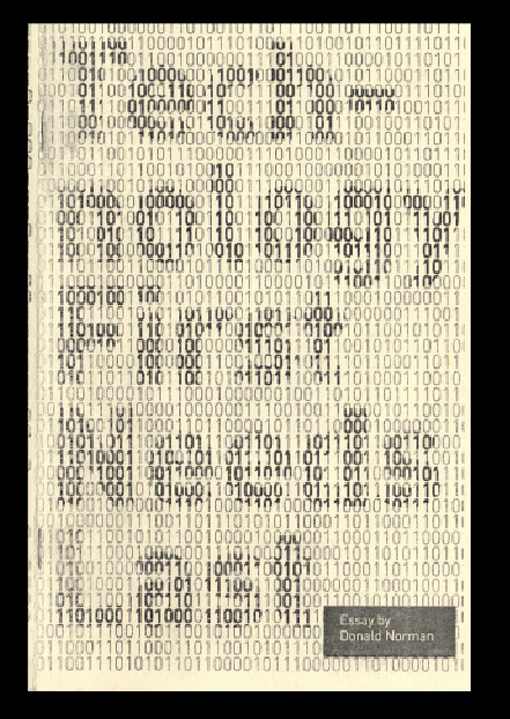
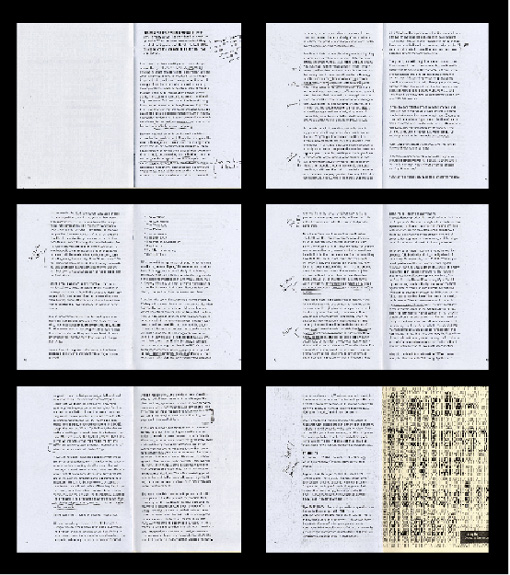
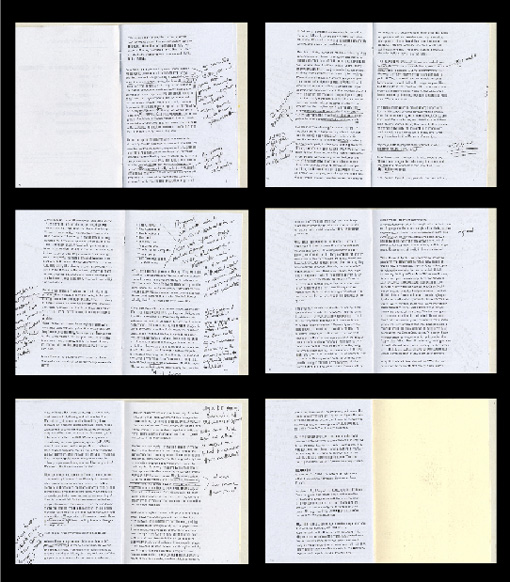
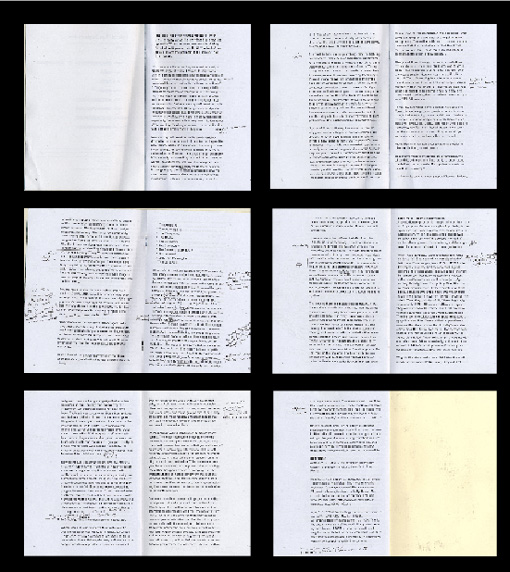
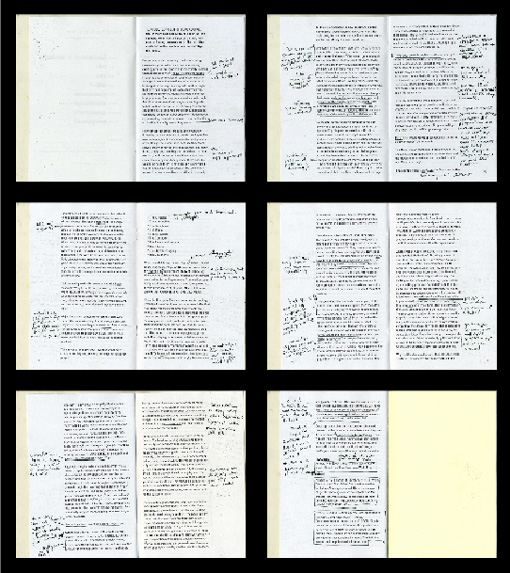
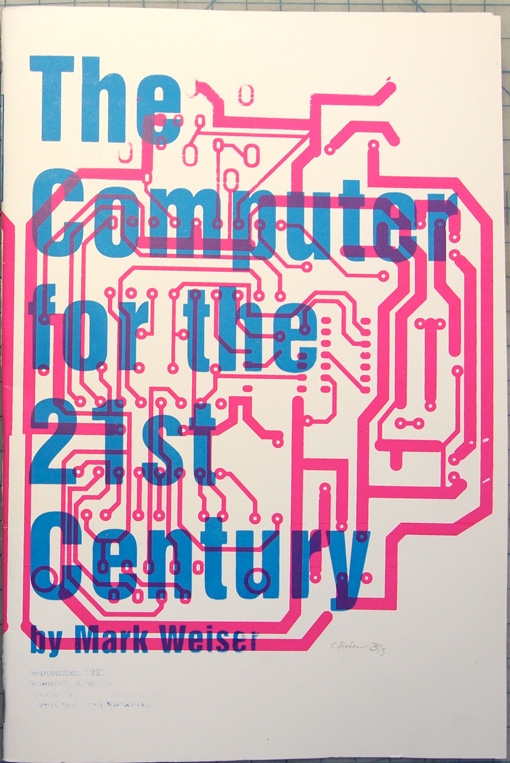
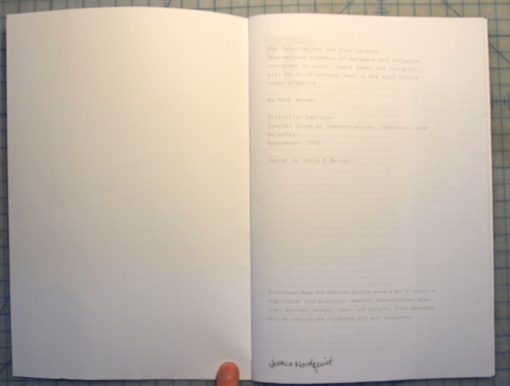
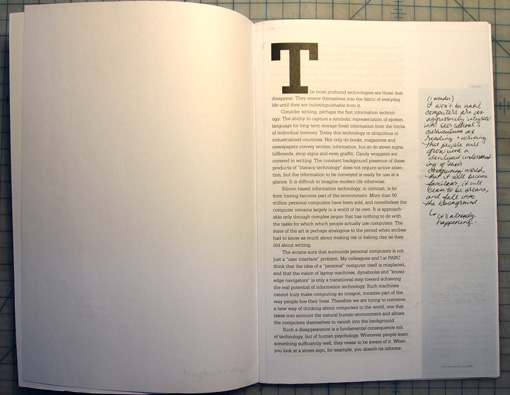
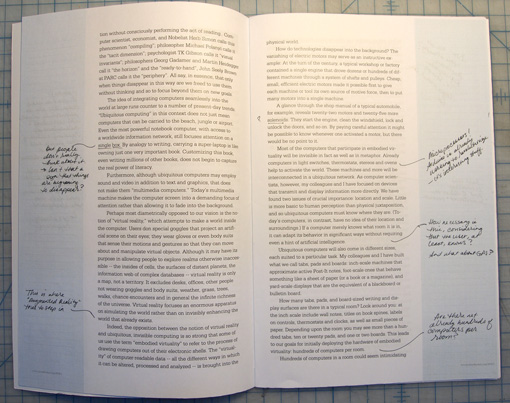

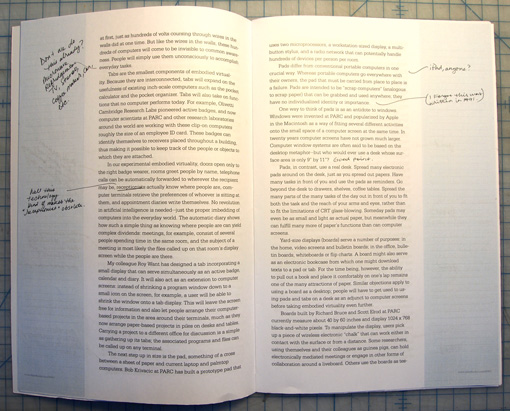
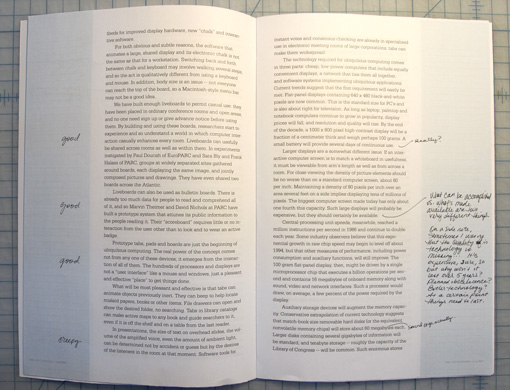
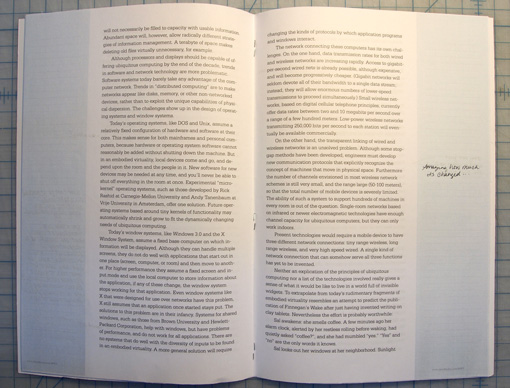
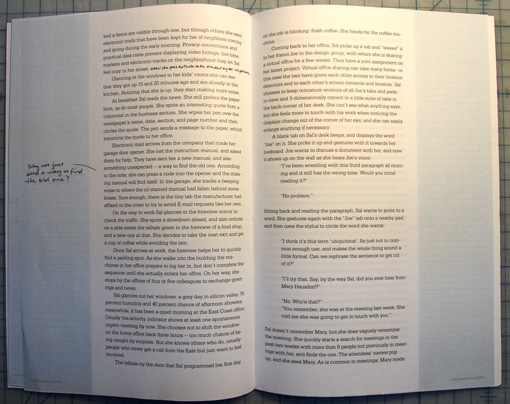
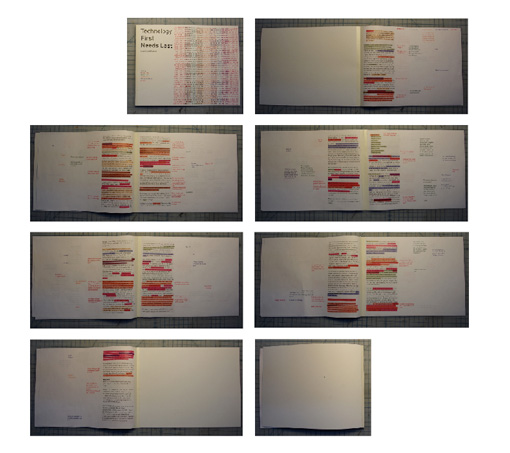
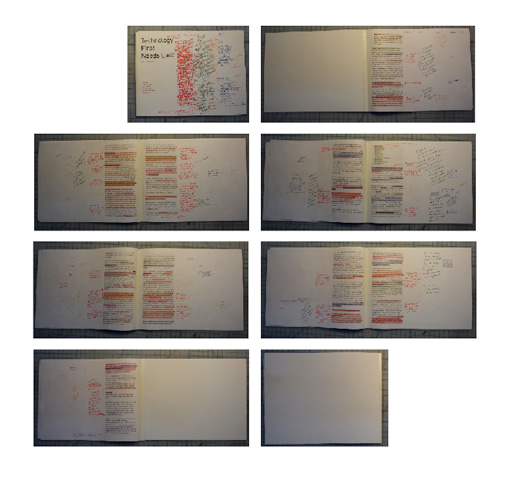
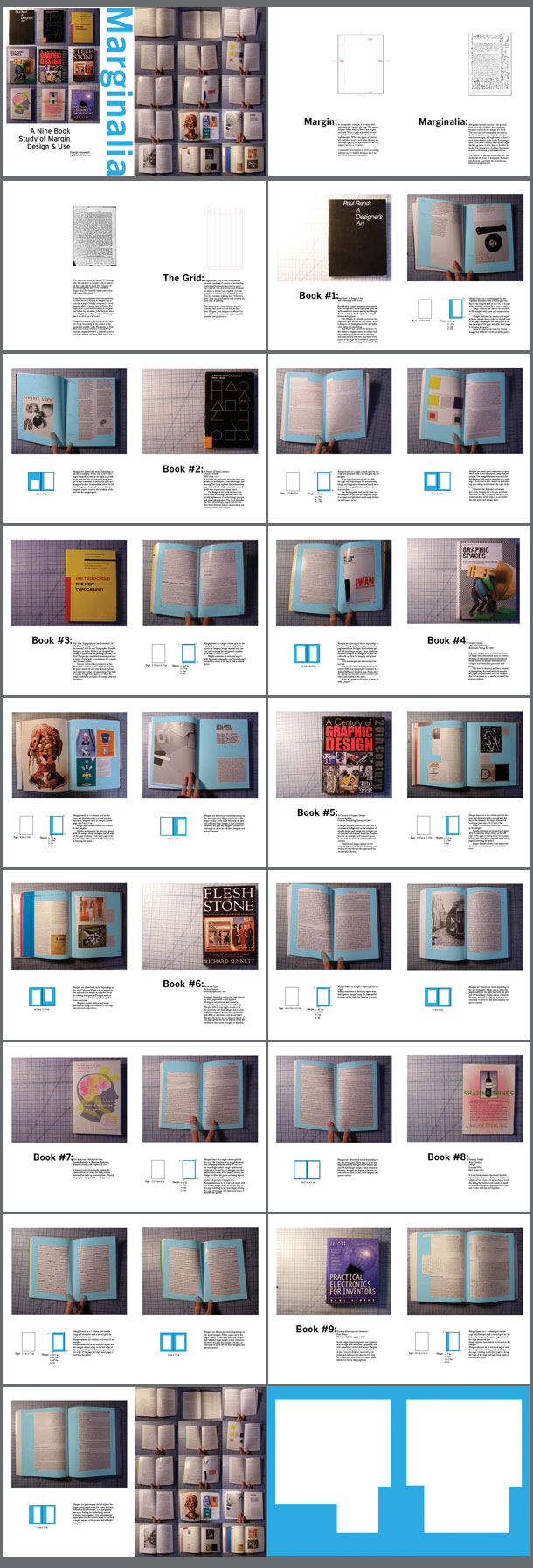

Computation seems to be in a second stage of evolution. As we move into a world where millions of people are carrying computers in their pockets, the computer has started to remove us from behind a desk. The potential of mobile computing engages a user and the physical world. If the purpose of computation at our fingertips is to allow us connection to the information cloud? then what is the form that that connection should take? Mark Weiser famouly quoted in his essay : The Computer For the 21st Century 'the most profound technologies are those that disappear. They weave themselves into the fabric of everyday life until they are indistinguishable from it.' The interesting part is technologies start to change everyday life. Cell phones are no longer just phones but their ability to be that mode of communication has allowed the access of other interventions and introductions of computers into the hand and away from behind a desk. A computer cannot be a piece of paper but that does not mean a computer can incorporate paper. If books and print material could be used in the same fashion with their simplicity of interaction ie the turning of pages but have the advantage of a social counterpart, then computing would have the ability to become indistinguishable in everyday use by making the use of the book fit with the use of the computer.
An exploration of materials that are conductive. A methodology of experimentation was used to indicate process, screen print possibility, cost, and aesthetic quality of the material plus whether or not it can conduct electricity. An on-going exploration into experimenting with conductive powders and materials within inks, paints and glues that can be used for paint or be pulled through a silkscreen. Initial material choices were dictated by whether or not I thought it might have some conductive qualities. The process helped me have a greater understanding of the electric properties and also the aspects of experimenting to make new hybrid inks. Powdered graphite became the most consistent conductor of electricity but is a variable resistor. These experiments drive at the idea that paper can possess conductive qualities just like the motherboard of screen based technologies.
Powdered graphite became the most consistant conductor of electricity but is a variable resistor. A variable resistor is a resistor for regulating current, and the more graphite that is used in the ink the lower the current through the circuit.These experiments drive at the idea that paper can be something more than just ink on paper. The premise that paper can be connented to computation allows the interaction with paper to become linked as a interface.
A Norwegian researcher, Anne Mangen, wrote in the Journal of Research in Reading, asserting that screen reading and page reading are radically different. 'The feeling of literally being in touch with the text is lost when your actions – clicking with the mouse, pointing on touch screens, or scrolling with keys or on touch pads – take place at a distance from the digital text, which is, somehow, somewhere inside the computer, the e-book, or the mobile phone,' Mangen writes. Her conclusion: 'Materiality matters. . . . One main effect of the intangibility of the digital text is that of making us read in a shallower, less focused way' The materiality of paper takes on a extended meaning due to its experience. The knowledge that is contained with in a book is not singularly wrapped up in the words on the page. The brain associates the experience of the learning along with the recall of that information. The reading of a book is learned through the experience of the pages. Knowledge that is engaged in the physicality of pages is then linked with that experience. Book have mass and take up 3d space linking the leaning located in pages to that space recognition within the brain’s spacial recognition centers. Pages then become essential to formulation of knowledge within a book because a book is defined within the brain as a spacial object. Media critic William Powers wrote a defense of physical bound literature in his essay, 'Hamlet’s BlackBerry: Why Paper Is Eternal,' Mr. Paper – he not dead, Powers wrote: 'There are cognitive, cultural, and social dimensions to the human-paper dynamic that come into play every time any kind of paper, from a tiny Post-It note to a groaning Sunday newspaper, is used to convey, retrieve, or store information.' Paper will never die, Powers concluded: 'It becomes a still point, an anchor for the consciousness. It’s a trick the digital medium hasn’t mastered – not yet.' The digital medium has been attempting to replace the piece of paper. Now what if the digital medium and the physical medium where equal? When paper and computer work together seamlessly then paper takes on an added functionality with the computer. as a interface.
1. Information architectures become ecosystems When different media and different contexts are tightly intertwined, no artifact can stand as a single isolated entity. Every single artifact becomes an element in a larger ecosystem. All these artifacts have multiple links or relationships with each other and have to be designed as part of one single seamless user experience process.
2. Users become intermediaries Users are now contributing participants in these ecosystems and actively produce new content or remediate existing content by ways of mashups, commentary, or critique. The traditional distinction between authors and readers, or producers and consumers, becomes thin to the point of being useless and void of meaning. All build new relationships and meanings by means of mashups, aggregators, and social networking tools, and all agents contribute content through the crowdsourcing leveraged by the Web via wikis, blogs, and other participatory tools, and mobile devices.
3. Static becomes dynamic On one hand, these architectures aggregate and mashup content which physically may reside elsewhere and which might have been released for completely different purposes. On the other hand, the active role played by intermediaries makes them perpetually unfinished, perpetually changing, and perpetually open to further refinement and manipulation.
4. Dynamic becomes hybrid These new architectures embrace different domains (physical, digital, and hybrid), different types of entities (data, physical items, and people), and different media. As much as the boundaries separating producers and consumers grow thin, so do those between different media and genres. All experiences are crossmedia bridgeexperiences across a breadth of different environments.
5. Horizontal prevails over vertical In these new architectures correlation between elements becomes the predominant characteristic, at the expenses of traditional top-down hierarchies. In open and ever changing architectures hierarchical models are difficult to maintain and support, as intermediaries push towards spontaneity, ephemeral or temporary structures of meaning, and constant change.
6. Product design becomes experience design When every single artifact, be it content, product, or service, is a part of a larger ecosystem, focus shifts from how to design single items to how to design experiences spanning processes. Everyday shopping does not concern itself with the retail shop only, but configures an experience process which might start on traditional media with a television commercial or newspaper advertisement, might continue on the Web with a research for comments or for locating the nearest convenience store, might proceed to the shop to finalize a purchase, and finally returns to the Web for assistance, updates, customization, and networking with other people or devices.
7. Experiences become cross-media experiences Experiences bridge multiple connected media and environments into ubiquitous ecologies. One single unitarian process where all parts contribute to the final, seamless user experience.
The 7 premises established in the Pervasive Information Architecture Book engage the existing ecology’s of book and screen culture become linked as a interface.
Students are reading through the screen instead of on books or paper formats, it's important for educators to determine how the shift is altering their habits and learning. The fledgling research is discussed in an article in the Journal of Research in Reading (2008, pp. 404-419) by Anne Mangen, 'Hypertext fiction reading: haptics and immersion.' Mangen notes the growing sub-field of screen reading studies, but finds that the 'intangibility and volatility of the digital text' remain under-examined. She focuses first on the immaterial nature of digital text in comparison against the non-digital reading experiences. 'Unlike print texts,' she writes, 'digital texts are ontologically intangible and detached from the physical and mechanical dimension of their material support, namely, their computer or e-book (or other devices, such as the PDA, the iPod or the mobile phone' (405). This is important, she argues, because 'materiality matters.' The reading experience includes manual activities and haptic perceptions (what the skin and muscles and joints register), and so as activities and perceptions of that kind are changed from one kind of reading experience to another because of the object, the reading experience, too, will change.
So if materiality matters in the delivery of content especially reading material, then it would be arguable that to remove the materiality of paper from the reading experience would fundamentally alter that exchange. Screen engagement is a reality in modern times but the advantages of the screen have forced its usability right next to the book forcing them to go head to head. As use of screen based devices increases, the need for physical interaction with objects like books will become essential in the mode of content delivery. I believe users should not have to exchange the tangible experience of a book for the animated experience of digital screens. Many things in this world have multiple experiences and with the linking physical and digital it opens up a strategy and platform for making printed content and digital content work together. John Locke said, 'reading furnishes the mind only with materials of knowledge; it is thinking that makes what we read ours.' Thinking can be greatly enhanced through digital means of networking and making paper and computer work together will greatly enhance the opportunity to 'make what we read ours.'
Students are reading through the screen instead of on books or paper formats, it's important for educators to determine how the shift is altering their habits and learning. The fledgling research is discussed in an article in the Journal of Research in Reading (2008, pp. 404-419) by Anne Mangen, 'Hypertext fiction reading: haptics and immersion.' Mangen notes the growing sub-field of screen reading studies, but finds that the 'intangibility and volatility of the digital text' remain under-examined. She focuses first on the immaterial nature of digital text incomparison against the non-digital reading experiences. 'Unlike print texts,' she writes, 'digital texts are ontologically intangible and detached from the physical and mechanical dimension of their material support, namely, their computer or e-book (or other devices, such as the PDA, the iPod or the mobile phone' (405). This is important, she argues, because 'materiality matters.' The reading experience includes manual activities and haptic perceptions (what the skin and muscles and joints register), and so as activities and perceptions of that kind are changed from one kind of reading experience to another because of the object, the reading experience, too, will change. So if materiality matters in the delivery of content especially reading material, then it would be arguable that to remove the materiality of paper from the reading experience would fundamentally alter that exchange. Screen engagement are a reality in modern times but the advantages of the screen have forced its usability right next to the book forcing them to go head to head. As use of screen based devices increases, the need for physical interaction with objects like books will become essential in the mode of content delivery. I believe users should not have to exchange the tangible experience of a book for the animated experience of digital screens. Many things in this world have multiple experiences and with the linking physical and digital it opens up a strategy and platform for making printed content and digital content work together. John Locke said, 'reading furnishes the mind only with materials of knowledge; it is thinking that makes what we read ours.' Thinking can be greatly enhanced through digital means of networking and making paper and computer work together will greatly enhance the opportunity to 'make what we read ours.'
Margins within technology are locations for buttons, actions, and tools associated with the particular application that is being used. I explored the potential of a margin when given a computational affordance. I created a 9 book analysis/design research study of margins, ranging from design content to technical textbooks, a piece of print material then describes each examples margin design and use, associated within grid, layout and space. Marginalia and the use of margins with in written content is an outcome of design and layout. The margins apply to the 'form follows function' law and applies particular margin use and design into each artifact.

